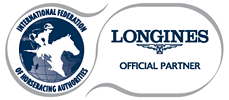Declines in national purses and handle coupled with continued strength in the auction sales markets and in regional breeding markets highlight statistics contained in The Jockey Club’s 2006 Online Fact Book, which was released today on the organization’s website at http://www.jockeyclub.com.
The Jockey Club Fact Book is published annually as a statistical and informational guide to the North American Thoroughbred industry; the 16th edition of the printed version will once again be published and distributed in early May.
Available purse money in the U.S. in 2005 declined 0.7% to $1,085,005,415, with the steepest declines in West Virginia and Kentucky. In West Virginia, where purses in 2004 were boosted by the distribution of an approximate $10 million purse underpayment at Charles Town Races, gross purses in 2005 dropped by more than $16.3 million. The West Virginia legislature’s decision to divert revenue from track purses to the state workers’ compensation fund also contributed to the state’s 18.2% decline in purses last year. Meanwhile, gross purses in Kentucky in 2005 dropped by nearly $7 million against 2004 purses, which included the $5 million bonus paid to Smarty Jones after his victory in the Kentucky Derby.
Total handle on U.S. Thoroughbred races in 2005 declined for the second consecutive year, falling 3.6% to $14,561,288,951. This two-year downturn coincides with the continuing and well-documented growth of off-shore wagering through unregulated outlets, whereby wagers do not reach host track pools. Also contributing to the decline in 2005 was the loss of 147 racing days, a number of which occurred at racetracks located in or near communities befallen by natural disasters.
Statistics in the “Breeding” section continue to affirm the beneficial effect of alternative gaming at racetracks on state breeding industries. Among the top 15 states by breeding activity in 2005, those showing the largest percentage gain in number of mares bred since 2003 were Louisiana, New Mexico, West Virginia and Pennsylvania. From 2003-2005, the number of mares bred to Louisiana stallions increased 23.3%; mares bred to New Mexico stallions grew 14.0%; and mares bred to West Virginia stallions jumped 13.2%. In Pennsylvania, which passed racino-enabling legislation in 2004, the number of mares bred to state stallions in 2005 increased 15.6% over 2003. (A “racino” is a racetrack that also offers alternative gaming.)
Statistics in the “Sales” section underscore the favorable auction sales market conditions of recent years, as gross sales in 2005 increased 8.0% to a record $1,139,290,425. Gross sales and average price for weanlings, yearlings and two year olds increased against 2004 returns while gross sales and average price for broodmares dipped marginally after healthy gains in 2004.
In the Online Fact Book, some tables have been expanded to include multi-year reports; others include state-by-state analysis. Statistics in the Breeding section, which by their very nature change constantly, are updated regularly.
The “Breeding” section includes Annual Foal Crop and its Distribution by State; and Distribution of Stallions and Mares Bred by State.
The “Racing” section includes Number of Races; Gross Purses; Pari-Mutuel Handle; Distribution of Races by Purses and Distances; Size of Field and Starts per Horse; Two-Year-Old Racing; and the Relationship of U.S. Races, Purses and Foal Crops.
The “Sales” section includes Gross Sales in All Categories; Average and Median Price per Yearling; and the Foal Crop/Auction Yearling Percentage.
The following section of the Online Fact Book have also been updated: Thoroughbred Racing and Breeding Worldwide in 2004; the International Calendar of Events, which includes all Grade 1 races for which dates are known; and the Directory of National, State, Canadian and International Organizations, which includes phone numbers for all organizations and website links where known.
The Jockey Club, founded in 1894 and dedicated to the improvement of Thoroughbred breeding and racing, is the breed registry for North American Thoroughbreds.
|



